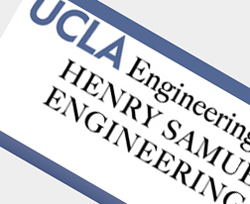From Internet to Interoperability: New UCLA Research to Benefit Public Safety Agencies
 As a former police officer with the LAPD, watching the television footage of Japan struggling to emerge from the triple disaster of an earthquake, tsunami and nuclear power plant malfunctions strikes close to home and serves as a sober reminder about the importance of an interoperable communications system for first responders.
As a former police officer with the LAPD, watching the television footage of Japan struggling to emerge from the triple disaster of an earthquake, tsunami and nuclear power plant malfunctions strikes close to home and serves as a sober reminder about the importance of an interoperable communications system for first responders.
Now that the FCC has decided that all 700 MHz public safety mobile broadband networks must use Long Term Evolution (LTE), cutting-edge technology can be used to protect the public.
As the skeletal frames of a national public safety network begin to take shape, public safety will benefit from some of the best minds in the field – including researchers at the University of California, Los Angeles.
UCLA has recently announced that the Henry Samueli School of Engineering and Applied Science is establishing a partnership with Raytheon to create the UCLA Center for Public Safety Network Systems. This center will help lead the way in the innovation and advancement of public safety technologies and standards. As the center’s first funder, Raytheon will provide a research grant of $1 million over three years.
Without question, the public safety field will benefit from UCLA’s extensive network experience. The university’s depth of knowledge in networking technology is unparalleled as it holds the enviable claim to history of being the birthplace of the Internet. UCLA engineering students and facility have also contributed to some of the biggest technological advancements in the last century, from blueprints for establishing a space station in the 1950s to the world’s first reverse osmosis plant and hybrid gas-electric vehicles.
With its prestigious reputation and first-rate research facilities, the UCLA Center for Public Safety Network Systems will attract leading experts across academia, industry and public safety agencies who will study open architecture options, broadband applications and standards-based systems of communications. This research, in turn, will complement any research and development that’s being conducted by corporations. For example, researchers at corporate R&D departments like Raytheon’s new Public Safety Regional Technology Center, which is opening in Los Angeles County this summer, will easily be able to tap into the findings at the UCLA center.
Perhaps the UCLA Center for Public Safety Network Systems’ most important function will be to serve as a neutral space for assessing products and networks, and establishing industry standards. For public safety, the next step is an integrated LTE communications network. As we enter this new phase, companies, researchers and public safety officials will all benefit from research that places the safety and interests of citizens first.



Pingback: UCLA Lab Focuses on New Technology for First Responders - ConnectedCOPS.net | ConnectedCOPS.net